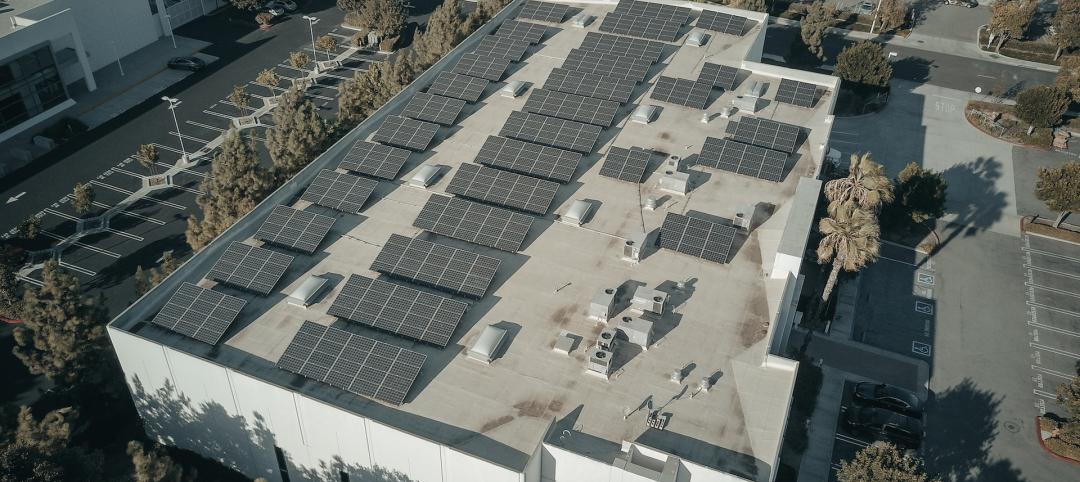After prolonged economic uncertainty, a majority of executives in the global engineering and construction sector have fresh confidence in the growth prospects for the industry, according to KPMG International's 2013 Global Construction Survey.
A general increase in backlogs and margins is giving cause for optimism across the industry, with further growth anticipated. Just over 50 percent of 165 C-level executives from the Americas; Europe, Middle East and Africa (EMEA); and Asia-Pacific (AsPac) regions said their companies experienced an increase in backlogs of at least 5 percent from 2012 to 2013. Moreover, though margins are not rising at the same rate as backlogs, 80 percent said their margins will either remain stable or increase more than 2 percent in the same period.
The Americas region had the highest confidence for growth with 90 percent forecasting margins as stable or increasing by more than 2 percent. By contrast, 28 percent of companies in the AsPac region see margins decreasing by fewer than 2 percent.
"Our 2013 survey shows the overall outlook in the industry is directionally positive," said Geno Armstrong, global leader of KPMG's Engineering and Construction practice. "A higher level of confidence in the Americas, demonstrated by large margin growth, is an indication of greater efficiency and cost management."
Looking at growth forecasts for 2013, optimism pervades with 64 percent expecting growth up to 25 percent. The highest growth is expected in Central and South America, and Africa. KPMG's Armstrong attributes the growth to "favorable trading conditions in the regions, as well as good prospects for mining, oil and natural gas." And, overall, companies with revenues greater than US$5 billion see the greatest potential for growth.
Drivers and Barriers to Growth
Government infrastructure plans (66 percent) were most frequently cited as the leading driver for growth, followed by global economic growth (42 percent) and population growth (38 percent).
In the Americas, privatization efforts via public-private partnerships (48 percent) and access to new energy sources such as natural gas or renewables (42 percent) ranked as the leading drivers for growth behind government infrastructure plans (58 percent).
Even with resurging optimism, many companies maintain a balanced view on what the likely obstacles to growth might be, with budget deficits and public funding shortages being the overwhelming factor, according to 72 percent of executives. Private-sector financing (43 percent) ranked second among respondents.
As companies ramp up for growth, a near consensus (93 percent) said that their risk management programs have improved project performance. Yet, more than three-quarters of respondents said the underlying causes of underperforming projects were project delays, poor estimating practices and failed risk management processes.
Expansion Plans -- New Geographies and Sectors
In anticipation of continued growth, 47 percent of respondents said their companies are making plans for international expansion into new regions. Africa (35 percent), U.S./Canada (28 percent), and the Middle East (22 percent) are the leading regional targets for expansion. Entering new sub-sectors of the industry is also in the works for 44 percent of respondents, with the power sector (54 percent), water-related activities (28 percent), and mining (27 percent) the leading areas for planned investment.
"The power sector is, without question, presently attracting the most interest," said Armstrong. "With the increase in economic activity and the hyper-focus on energy security, it stands to reason that many players will see opportunity in this area. Power, as well as water, mining, and other resources will increasingly become a critical priority of the business agenda in this industry."
About the KPMG Survey
The survey was conducted in early 2013 through face-to-face interviews with 165 senior leaders -- many of them Chief Executive Officers -- from leading engineering and construction companies in 29 countries worldwide. Respondent representation was spread across the Americas (20 percent), EMEA (52 percent), and AsPac (28 percent).
About KPMG LLP
KPMG LLP, the audit, tax and advisory firm (www.kpmg.com/us), is the U.S. member firm of KPMG International Cooperative ("KPMG International"). KPMG International's member firms have 152,000 professionals, including more than 8,600 partners, in 156 countries.
Related Stories
Market Data | Aug 1, 2023
Nonresidential construction spending increases slightly in June
National nonresidential construction spending increased 0.1% in June, according to an Associated Builders and Contractors analysis of data published today by the U.S. Census Bureau. Spending is up 18% over the past 12 months. On a seasonally adjusted annualized basis, nonresidential spending totaled $1.07 trillion in June.
Healthcare Facilities | Aug 1, 2023
Top 10 healthcare design projects for 2023
The HKS-designed Allegheny Health Network Wexford (Pa.) Hospital and Flad Architects' Sarasota Memorial Hospital - Venice (Fla.) highlight 10 projects to win 2023 Healthcare Design Awards from the American Institute of Architects Academy of Architecture for Health.
Office Buildings | Aug 1, 2023
Creating a nurturing environment: The value of a mother’s room in the workplace
Since becoming an architect, Rebecca Martin of Design Collaborative has drawn a mother’s room into numerous projects. But it wasn't until she became a mom that she fully appreciated their importance in the workspace.
Digital Twin | Jul 31, 2023
Creating the foundation for a Digital Twin
Aligning the BIM model with the owner’s asset management system is the crucial first step in creating a Digital Twin. By following these guidelines, organizations can harness the power of Digital Twins to optimize facility management, maintenance planning, and decision-making throughout the building’s lifecycle.
K-12 Schools | Jul 31, 2023
Austin’s new Rosedale School serves students with special needs aged 3 to 22
In Austin, the Rosedale School has opened for students with special needs aged 3 to 22. The new facility features sensory rooms, fully accessible playgrounds and gardens, community meeting spaces, and an on-site clinic. The school serves 100 learners with special needs from across Austin Independent School District (ISD).
MFPRO+ New Projects | Jul 27, 2023
OMA, Beyer Blinder Belle design a pair of sculptural residential towers in Brooklyn
Eagle + West, composed of two sculptural residential towers with complementary shapes, have added 745 rental units to a post-industrial waterfront in Brooklyn, N.Y. Rising from a mixed-use podium on an expansive site, the towers include luxury penthouses on the top floors, numerous market rate rental units, and 30% of units designated for affordable housing.
Affordable Housing | Jul 27, 2023
Houston to soon have 50 new residential units for youth leaving foster care
Houston will soon have 50 new residential units for youth leaving the foster care system and entering adulthood. The Houston Alumni and Youth (HAY) Center has broken ground on its 59,000-sf campus, with completion expected by July 2024. The HAY Center is a nonprofit program of Harris County Resources for Children and Adults and for foster youth ages 14-25 transitioning to adulthood in the Houston community.
Hotel Facilities | Jul 27, 2023
U.S. hotel construction pipeline remains steady with 5,572 projects in the works
The hotel construction pipeline grew incrementally in Q2 2023 as developers and franchise companies push through short-term challenges while envisioning long-term prospects, according to Lodging Econometrics.
Sustainability | Jul 27, 2023
USGBC warns against building energy code preemptions, rollbacks
In a recent editorial, the USGBC cited a growing number of U.S. state legislators who are “aiming to roll back building energy code standards and/or preempt local governments from advancing energy-efficient building codes.”
Resiliency | Jul 27, 2023
'Underground climate change' can damage building foundations, civil infrastructure
A phenomenon known as “underground climate change” can lead to damage of building foundations and civil infrastructure, according to a researcher at Northwestern University. When the ground gets hotter, it can expand and contract, causing foundations to move and sometimes crack.

















